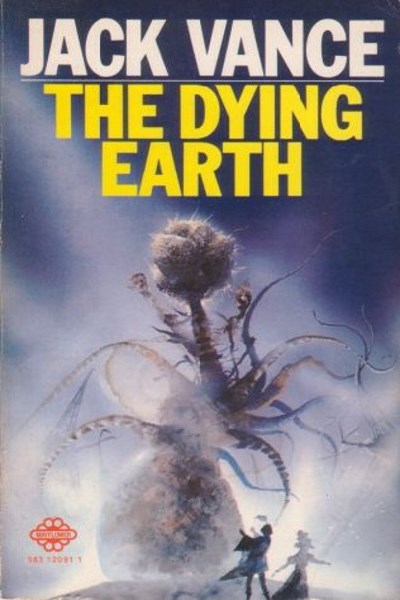
The Dying Earth by Jack Vance is the first part of the Tales of the Dying Earth omnibus that also includes The Eyes of the Overworld, Cugel's Saga, and Rhialto the Marvellous.
Jack Vance is one of the most prolific and popular science fiction and fantasy writers of our time. Many of his works are considered classics. The individual novels found in the Tales of the Dying Earth are certainly amongst them. I found it of particular interest that Vance, like myself, spent part of his childhood in the areas of San Francisco and Sacramento:
Vance's early childhood was spent in San Francisco. With the early separation of his parents, Vance's mother moved young Vance and his siblings to Vance's maternal grandfather's California ranch near Oakley in the delta of the Sacramento River. This early setting formed Vance's love of the outdoors, and allowed him time to indulge his passion as an avid reader. With the death of his grandfather, the Vance's family fortune nosedived, and Vance was forced to leave junior college and work to support himself, assisting his mother when able. Vance plied many trades for short stretches: a bell-hop (a "miserable year"), in a cannery, and on a gold dredge,[3] before entering the University of California, Berkeley where, over a six-year period, he studied mining engineering, physics, journalism and English. Vance wrote one of his first science fiction stories for an English class assignment; his professor's reaction was “We also have a piece of science fiction” in a scornful tone, Vance’s first negative review.[4] He worked for a while as an electrician in the naval shipyards at Pearl Harbor, Hawaii -- for "56 cents an hour". After working on a degaussing crew for a period, he left about a month before the attack on Pearl Harbor.[3]
The Dying Earth was originally published in 1950. In length, it is more novella than novel, coming in at 130 pages (figure 32,500 words; 250 words/page * 130 pages), and is, in fact, a collection of short stories. The stories share a common world: a future so far advanced that technology has become more akin to magic, even to the point where the few who still understand how the technology works are called sorcerers. Going into this compilation, I thought I was going to be reading science fiction. It was with some surprise, therefore, that I found the stories more fantasy than science fiction despite the presence of very advanced technology. In fact, in this first segment of Tales, the only technology that is recognizable as such is a sort of jet car in the story Ulan Dhor. The rest of it is described in a distinctively Dungeons & Dragons manner, with "spells" being cast with such names as Phandaal's Mantle of Stealth and another called Prismatic Spray (I'm almost certain there is a spell of the same name in Dungeons & Dragons; it's been a long time since I've played). In any case, it's clear where the founders of the game, Gary Gygax and Dave Arneson, found at least some of their inspiration.
The stories in The Dying Earth are told with an almost fairy tale or fable quality to them. Vance's style is of the classic era: matter-of-fact and to the point. They're enjoyable reads nonetheless. Also, one story sometimes will lead into another, with characters spanning one or more stories or sometimes making a cameo or maybe even a quick mention. This does much to solidify the experience of being in a 'real' world as the characters often run into each other and have realistic interactions as a result.
At only 130 pages, this first part of Tales of the Dying Earth is a quick read. But because this is a compilation you've got books 2, 3, and 4 right there. The whole collection comes in at just over 700 pages.

Indulge in fantastic tales of sword, sorcery, and alchemy today by joining thousands of readers like yourself who can't get enough of Scott Marlowe's
"intense" storytelling and "skillfully written" adventures. You'll get two free stories, The Hall of Riddles and The Assassin's Dilemma, just for signing up.